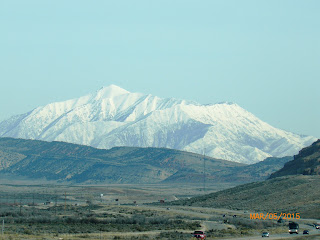Once again we are on our way south to Arizona for the winter time. We left Okotoks on October 26 at 5 am and arrived at the border crossing around 8 am. It was a wonderful day for traveling and were just starting to catch the sunrise as we arrived at the border. We are spending our first night in Idaho falls.
Our second night was spent at Sam's town casino in Las Vegas. They have a really nice campground there where we can get the trailer un winterized and ready for traveling as we head further south. From here we are going to Bullhead city and Laughlin Nevada to see my sisters for the day.
From Bullhead city we left and headed for Yuma and on our way we passed several fields where they grow many types of lettuce. Yuma County is the winter lettuce capital of the world, supplying a whopping 90% of the nation’s leafy vegetables between November and March.
We stayed at a campground in Yuma that was located on the western side of the city so that we would not have to drive far to the Mexican border as we plan on doing a little shopping and some R&R. At this campground we found many types of trees. Among them were lemons, oranges, grapefruits and believe it or not pomegranates. First time we saw a pomegranate tree in this part of the USA.

At the end of October before heading over to our resort in Mesa we went across the Mexican border to a town called Los Algodones. Los Algodones, Baja California, is a small Mexican town located on the extreme northeastern tip of the municipality of Mexicali, approximately 16 km (9.9 mi) west of Yuma, Arizona, USA. Its official name is Vicente Guerrero, although most people use Algodones or Molar City when referring to it. It reported a population of 5,474 as of the 2010 Mexican census. And as you can see we had lunch there involving some tacos, nachos and a few margaritas.
.jpg)




















 Driving into Las Vegas, NV
Driving into Las Vegas, NV 

























